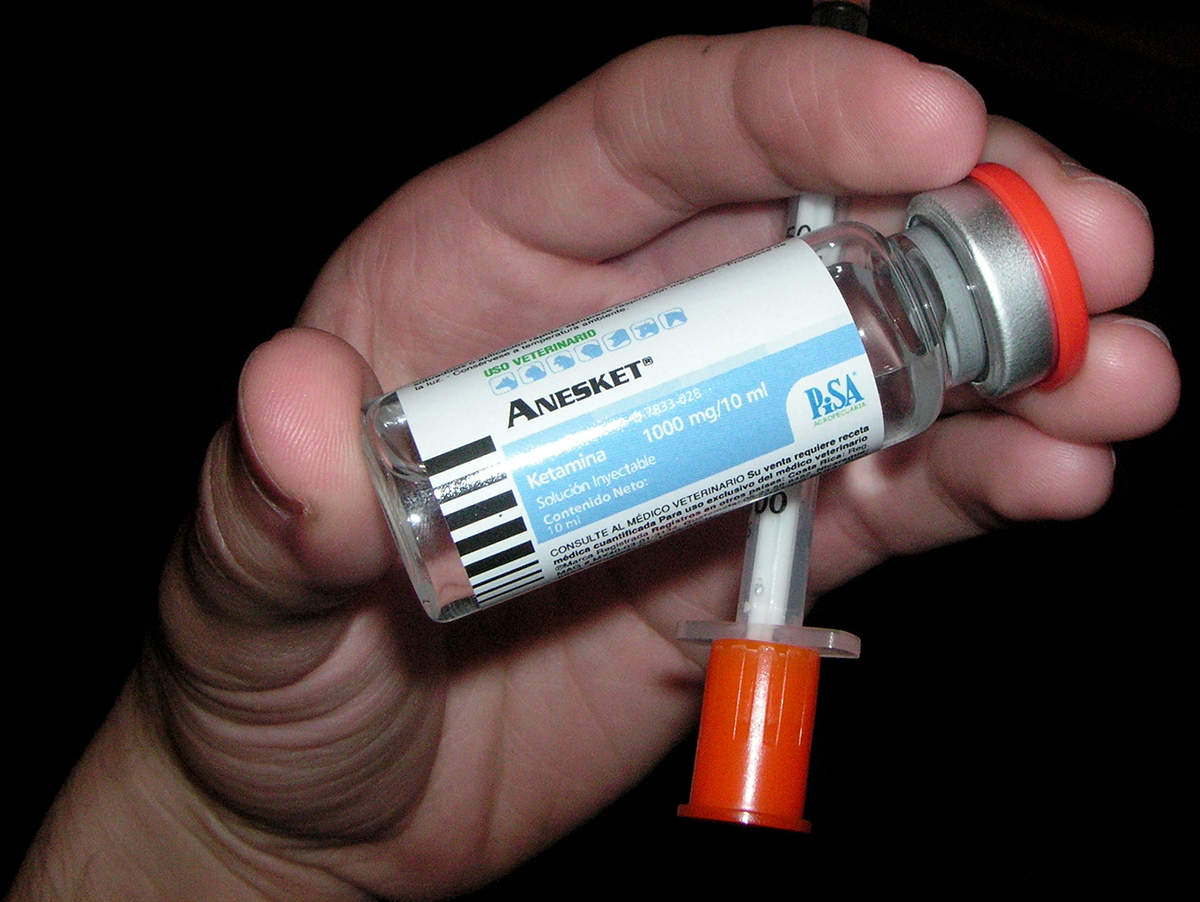A Party Drug May Soon Be Used to Treat Depression

Ketamine photo via Wikimedia Commons
On Tuesday, Johnson & Johnson announced that the FDA expedited the development of esketamine, a form of ketamine, as a potential treatment for major depressive disorder. It’s the second time esketamine has been given the Breakthrough Therapy Designation, and the latest step in ketamine’s 15-year journey from club drug to what could be the first new depression treatment strategy in roughly 50 years.
Ketamine was originally manufactured as a short-term anesthetic, and is still used that way today. Its dissociative and hallucinogenic effects, however, helped the drug find its way to the club scene before too long, and it has since gained a reputation as a street drug.
So how can an anesthetic that’s also a party drug ease the effects of depression?
That’s a question that Dawn Ionescu, a psychiatrist at Massachusetts General Hospital, has studied for some time. She was the lead author of a small May study that found that ketamine, in conjunction with conventional antidepressants, may reduce suicidal thinking in patients with clinical depression, and she’s been interested in the drug for years. Even still, Ionescu says there’s a lot she, and the entire scientific community, don’t know about how the substance works.
“We don’t quite understand its mechanism when it comes to treating depression, but it probably has something to do with dosing,” Ionescu says. “The doses that we use for ketamine for depression are much lower than what they use as anesthetic doses in the operating room. When we’re giving this little bit of ketamine, it’s hitting on certain receptors or parts of the brain that, when you give higher doses, aren’t as affected.”
And while research has strongly suggested that ketamine has value in treating depression—it seems to work where other treatments fail, and work quickly on top of that—Ionescu says there are still many unknowns. Would it be used alone, or with other medications? How could doctors curtail ketamine abuse? Are there similar but safer alternatives?
It’ll take more research to answer those questions, but Ionescu says the FDA green lighting esketamine has made her guardedly optimistic for ketamine’s future.
“Ultimately, we need to see the results of the phase three studies that are happening before we can draw any conclusions,” she says. “I’m definitely excited, but it’s a cautious excitement until the data come out.”


